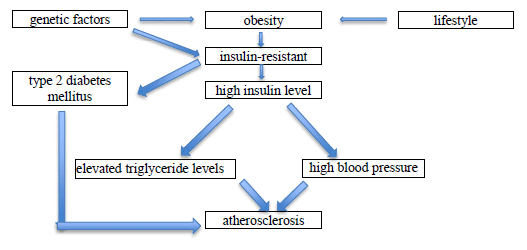II. Historical survey
In the 1920s, Kyle and her colleagues noticed that there seemed to be an association between hypertension, hyperglycemia and gout. In 1947, Vague suggested that visceral obesity may be associated with an increased risk of CVD and T2DM. In 1965, Avogaro and Crepaldi documented the simultaneous presence of hypertension, hyperglycemia and obesity as a common syndrome. Since the first description of the MetS as a cluster of metabolic abnormalities by Reaven in 1988, a number of papers have discussed this syndrome over the last 26 years. Obesity and insulin resistance are the basis of the MetS. The MetS may be associated with various diseases and symptoms, such as physical inactivity, metabolic disorders, CVDs, T2DM, nonalcoholic fatty liver disease (NAFLD), obstructive sleep apnea syndrome (OSA), gallstones, polycystic ovary syndrome (PCOS), asthma, etc.

Figure 1. The development of the MetS according to Reaven (1988)
In 1989, the syndrome involving a cluster of upper-body obesity, glucose (Glu) intolerance, hypertriglyceridemia and hypertension was named “the deadly quartet” by Kaplan. The various redefinitions of the MetS will be presented in the following sections.